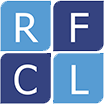Cash stuffing is making a comeback. What does this mean for cash?
Despite modern payment methods like card, buy now pay later and digital wallets, cash still has a few advantages. One of its biggest advantages is its usefulness as a budgeting tool, which is especially important in uncertain economic times.
One way Gen Z and other generations is using cash is through an old technique known as cash stuffing. With this technique, you “stuff” cash into envelopes that are labeled for certain expenses like groceries, gas, entertainment and other expenses.
To learn more about this technique, why it’s making a comeback and how it reveals the longevity of cash, ATM Marketplace spoke with Thomas Rudzewick, president and CEO of Maspeth Federal Savings, a bank based in New York.
Q: Why has cash stuffing made a comeback?
Rudzewick: I think people are trying to become more in tune with their spending habits. Especially as many are feeling the pull from economic uncertainty and rising living costs.
We live in a time where spending is often frictionless and sometimes impulsive. Many people, especially the younger generations who may have overused spending options/systems such as tap and pay and buy now, pay later, are now turning to this old-school method as a way to regain control they feel they have lost or perhaps never had in the first place. When you feel a tangible connection to your money, it almost automatically causes you to set firm boundaries on spending; when you feel that physical dollar bill in your hand, you are more reluctant to let it go.
Q: How does it work?
Rudzewick: Instead of relying on credit cards and apps — and often overspending or going into debt — cash stuffing involves dividing cash into separate spending categories and using designated envelopes. Spending is then restricted to only what’s in each envelope. This hands-on method creates a tangible sense of control and makes it easier to track exactly where every dollar goes.
Q: How does this reveal the relevancy of cash?
Rudzewick: Cash stuffing is returning to basics by highlighting the psychological impact of physically handling money. When you use cash, every transaction feels more ‘real’ — unlike digital payments, which can feel abstract, detached and a little too quick. This tactile approach slows the transaction process down and reinforces mindful spending and financial discipline.
Q: What are its pros and cons?
Rudzewick: One of the primary advantages of cash stuffing is that it promotes more intentional spending. It can help you teach yourself the value of a dollar. By setting firm limits for each category, this trend can help prevent impulse purchases and reliance on credit cards, which can easily lead to debt. It also offers a simple, visual way to track spending without relying on technology.
However, some cons include the inconvenience of an increasingly cashless society, the risk of losing or misplacing your cash, and the inability to cover online or automated expenses, such as subscriptions or digital services that many of us have. Additionally, using cash means missing out on potential credit card rewards or interest earned on bank balances. However, I do think that using this trend as a baseline to cover a majority of your expenses can still help you reset spending patterns.
Q: What expenses are more difficult to cover with this method?
Rudzewick: Cash stuffing is an excellent trend for the day-to-day to help you realign with your financial goals. However, as I highlighted above, it will not work for every purchase. Expenses that are automatically withdrawn or require online payment, such as streaming subscriptions, utility bills, insurance premiums, or loan payments, cannot be managed through this method.
Some larger purchases, like travel bookings, hotel reservations, or any expense that requires a credit or debit card, are also not easily accommodated by this method.
Q: How can financial institutions support its customers in budgeting via other methods?
Rudzewick: Financial institutions can support customers by offering digital budgeting tools that simulate the envelope method in some way. Alternatively, if these tools are already in place, they can be promoted as safe and effective budgeting options that customers can utilize. Some banks may already have features that can mimic a cash stuffing challenge, such as setting up real-time spending alerts with the bank, automatic savings transfers, and prepaid debit cards with set spending limits or budgeting templates.
Q: Anything else you’d like to add?
Rudzewick: Maspeth Federal Savings offers a tool called the MX Money Management tool, which helps you create goals and tailor your budget. This is something that you can use along with cash stuffing. This is a free tool that can be accessed through our mobile app.
Categories: ATMs Cashless Society





